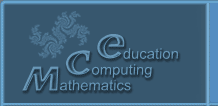|
|
PresentationsComparative analysis of classical and neural network methods for detecting atoms in atomic-scale imagesLomonosov Moscow State University, Physics Faculty, dep. Mathematical Modeling and Computer Science, Kolmogorova str., Moscow, 119991, Russia, 1, +7 (996) 334-56-28, zyryanov.konstantin.sergeevich@gmail.com One of the main tasks in the field of atomic scale image processing is the accurate detection of atoms and determination of their number [1]. In this paper, a quantitative comparison of two different approaches to atom detection is made: the classical detection method based on a combination of Otsu, Hough, morphological alignment algorithms and a method based on neural network image processing by YOLO architecture models. The classical approach is based on the use of the Otsu algorithm, which divides the image into sections and calculates the threshold value for each section individually, taking into account local pixel intensities. Morphological opening and closing operations allow to remove noise in the image and improve the shapes of objects. The Hough algorithm is used to detect atoms in the image, false positives of the algorithm are filtered out. To train the neural network, a specialized dataset consisting of 500 images of atoms was created, focused on the detection task. Before the training, data augmentation techniques were applied, including Gaussian blur, mirroring, image rotation, cutting out part of the image and changing the brightness. Various sizes of a neural network with the YOLO architecture for object detection have been investigated [2]. The performance of the models is estimated using the mAP@50 metric. The table shows the results of validation of various detection methods. The experimental results show that the neural network approach solves the problem of detecting atoms with higher accuracy.
References 1. Binnig G., Rohrer H. Scanning tunneling microscopy // Helv. Phys. Acta, 55, 726, 1982. 2. Redmon J., Divvala S., Girshick R., Farhadi A. You Only Look Once: unified, real-time object detection. // IEEE Conference on Computer Vision and Pattern Recognition (CVPR), 2016.
|

